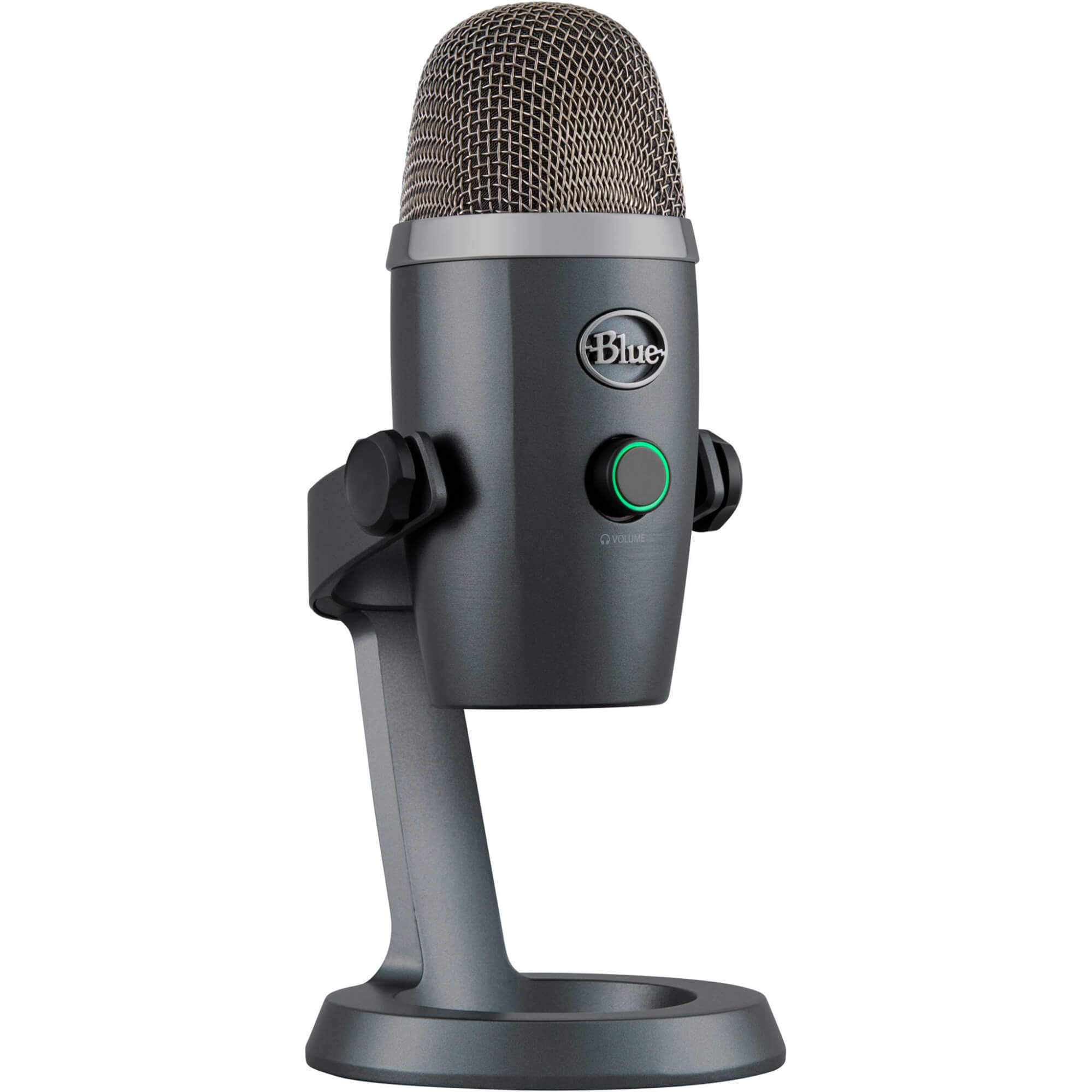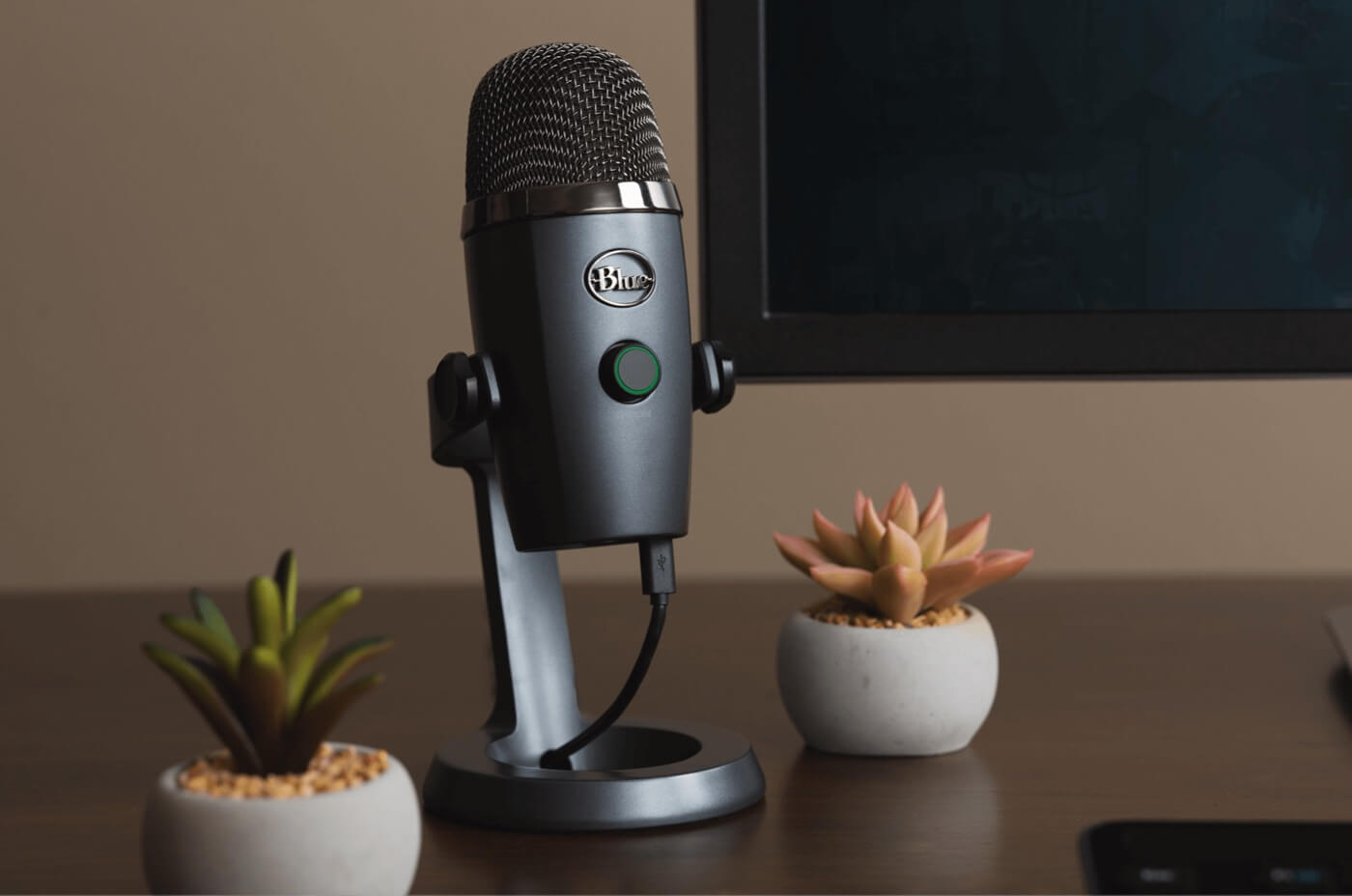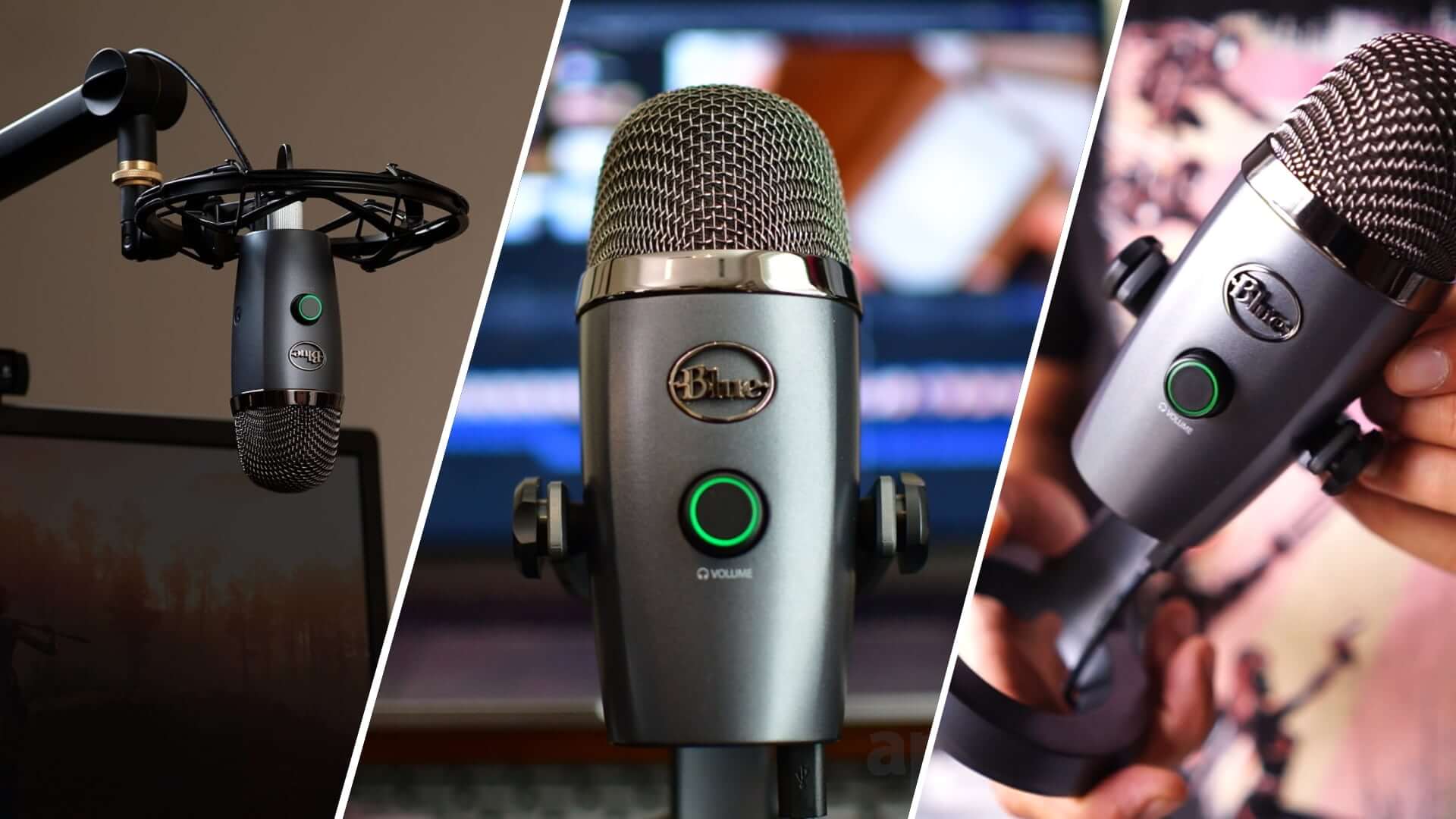The Blue Yeti Nano microphone is one of the most popular USB mics in the world — but is it any good? Today, we’re going to look at the Blue Yeti Nano microphone’s tech specs, price, pros and cons, and more to see how it stacks up against the competition. By the end, you’ll know what makes the Yeti Nano unique, and whether or not it’s the right mic for your production.
Yeti Nano Tech Specs
Blue Yeti Nano microphone tech specs
The Blue Yeti Nano microphone promises “broadcast quality sound” with a small form factor — but how much smaller is the Nano microphone compared to the Blue Yeti microphone? It’s about half an inch shorter on the base, an inch narrower in width, and three and a half inches shorter in height.

Blue Yeti USB Microphones • Nano Model
Here’s a list of the full Blue Yeti Nano microphone tech specs, via their site.
BLUE YETI NANO MICROPHONE TECH SPECS
- Power required/consumption: 5V 150mA
- Sample rate: 48kHz
- Bit rate: 24bit
- Capsules: 2 Blue-proprietary 14mm condenser capsules
- Polar patterns: Cardioid, omnidirectional
- Frequency response: 20Hz-20kHz
- Sensitivity: 4.5mV/Pa (1kHz)
- Max SPL: 120dB (THD: 0.5% 1kHz)
- Dimensions (mic with stand): L: 4.9” (10.9cm), W: 3.78” (9.6cm), H: 8.31” (21.1cm)
- Weight: 1.39lbs (0.63kg)
- Impedance: >16 ohms
- Power Output (RMS) 58mWrms per channel (R Load = 16ohms)
- THD: 0.009%
- Frequency Response: 15Hz-22kHz
- Signal to Noise: 100dB
- System requirements: Windows 10 or higher, MacOS 10.13 or higher, USB 1.1, 2.0, 3.0
The dimensions, polar patterns, and system requirements are the most important things to note if you’re considering buying a Yeti Nano mic.
*Note that the Nano only features two polar patterns: cardioid and omnidirectional.
Yeti Nano USB Mic Reviewed
Nano mic strengths and weaknesses
The Blue Yeti Nano is a popular USB microphone — but it isn’t without its weaknesses. Let’s take a look at the Nano’s strengths and weaknesses to see if it’s a mic that makes sense for you.

Blue Yeti USB Microphones • Strengths
BLUE YETI NANO MICROPHONE STRENGTHS
- Strength #1: Portability — the portability of the Blue Yeti Nano is perhaps its greatest strength. If you’re planning on transporting a mic long distances, then the Blue Yeti Nano might make sense.
- Strength #2: Audio Quality — the Blue brand is known for making high quality microphones, so it shouldn’t come as a surprise that the Yeti Nano consistently receives high marks for its audio quality capture.
- Strength #3: Blue Sherpa software — the Blue Sherpa software isn’t regarded as the greatest audio app, but it's a nice inclusion for Blue Microphone users.

Blue Yeti USB Microphones • Weaknesses
BLUE YETI NANO MICROPHONE WEAKNESSES
- Weakness #1: Price — the $100 (MSRP) price of the Blue Yeti Nano is… questionable. For $30 more (MSRP), you could get the full Yeti with stereo mode and bidirectional mode. And for $30 less (MSRP), you could get the similarly esteemed Snowball.
- Weakness #2: Interface — Apple has (mostly) ditched USB 3 over the past few years, which means that if you’re planning on using a Yeti Nano with a Mac, you’re going to need an adapter. Make sure to check the interface of your machine before buying a mic, or to buy an adapter/dongle to ensure compatibility.
- Weakness #3: Polar Patterns — the Blue Yeti Nano offers two polar patterns: cardioid and omnidirectional. For most people, those two patterns will work fine. But if you’re one of the few that needs a stereo mode or bidirectional mode, then you might want to consider looking at the full Yeti or Yeti X.
Yeti Nano Review
Yeti vs Yeti Nano
If you’re seriously considering buying a Blue Yeti Nano, you may be wondering “why shouldn’t I just get the Blue Yeti microphone instead?” Good question. This next video from Jarrod’s Tech takes a look at the differences between the Yeti and the Yeti Nano.
Blue Microphones Yeti Nano Review by Jarrod’s Tech
It’s clear from seeing the Yeti Nano in action that it’s much shorter than its Yeti counterpart. What does that mean? Well, it means transporting it in your backpack/camera bag could be much easier.
Ultimately, the differences between the two models are minimal. Just remember to review the mic’s polar patterns, interfaces, and dimensions before choosing. Overall, you can't go wrong.
UP NEXT
Ultimate Guide to Sound Recording
Ready to learn how to maximize your new mic’s potential? Check out our next article on audio gear and audio-mixing techniques, where we break down all the hardware and software needed to master the art of the microphone. By the end, you’ll have all the knowledge needed to capture clear audio.
Up Next: Sound Recording Techniques →
Showcase your vision with elegant shot lists and storyboards.
Create robust and customizable shot lists. Upload images to make storyboards and slideshows.
